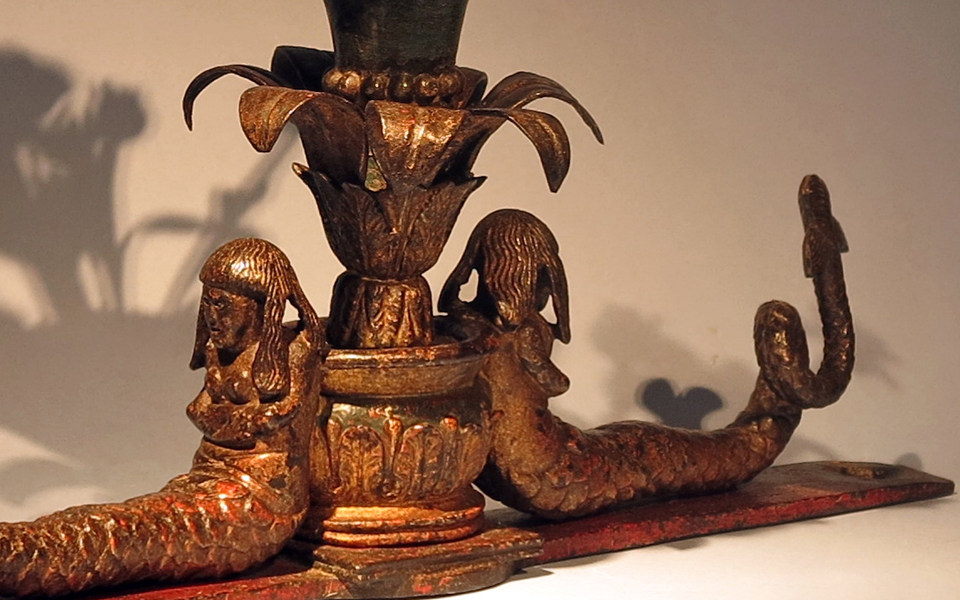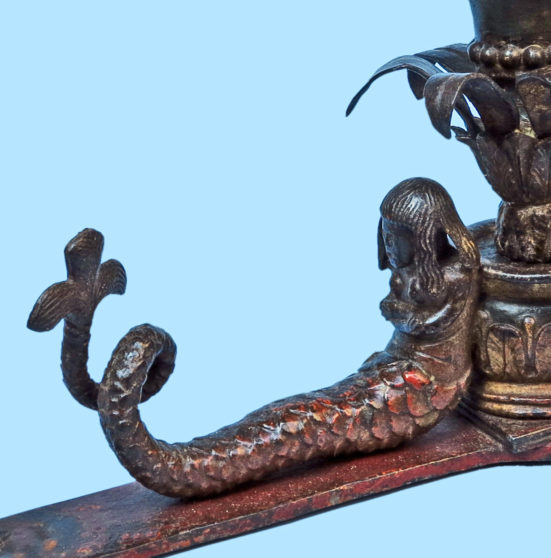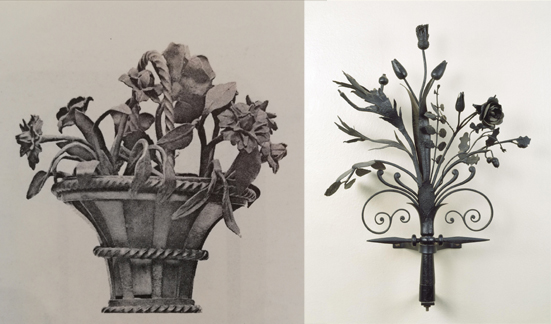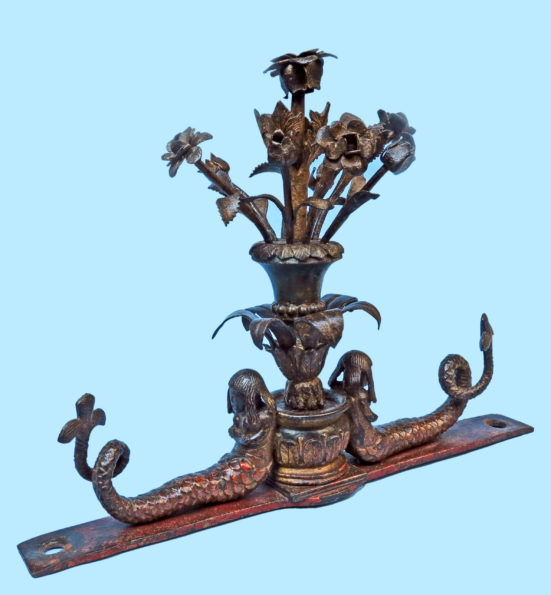
Iron Roses and Mermaids: an 18th century unicum
A vase, resting in the centre of a rectangular plate, houses a thick tuft of leaves, above which stands another little vase with a rich bouquet of tiny roses. Leaning back against the vase sides, there are two symmetrical mermaids with scaled and curled tails with a trilobed finial, sitting with arms folded over their bare chest. Their voluminous hair, separated into four locks, features a large and straight fringe.
The piece still shows several traces of the original polychromy in shades of red, green, yellow, a quite common feature in the 18th century European production of decorative ironwork.

The sirens characterizing this piece are supernatural creatures of Greek mythology and religion; they were daughters of the Earth and handmaids of Persephone, the Lady of Hades, and – according to tradition – they dwelt at the underworld threshold. Pythagoras placed the sirens in the Tetrad, therefore in the ultra-sensitive world, considering them an expression and the guarantors of cosmic harmony. Initially represented as half-woman and half-birds creatures, from the Middle Ages they gradually turned into beautiful maidens with bare breasts and fish tails instead of legs. Sirens are also considered a symbol of eloquence and persuasion, and are traditionally part of the aquatic and marine symbology.

The piece here presented could originally have been conceived to adorn the top of a decorative ironwork (a window grille or an interior gate), of a piece of furniture (a bed, a frame), of a chandelier or a sign.
This crowning element is an unpublished and particularly rare work, without terms of comparison neither in the bibliographical repertoires nor in the ironwork museum collections: a sort of unique piece, testifying the great inventive capacity and at the same time the technical and aesthetic refinement of the French ironwork of the eighteenth century.

CROWNING ELEMENT
Wrought, carved, embossed and engraved iron with traces of polychromy
France
Late 18th century
Cm 37,5 x 14,5 x 27,5h
References: L. Blanc, Fer forgé en France, Paris, II vol. 1928-1930; M. Pessiot, Jolis objets en fer. Le Secq de Tournelles à Rouen, 2000, pp. 12-25; M. Campbell, An Introduction to Ironwork, 1985.
© 2013 – 2024 cesatiecesati.com | Please do not reproduce without our expressed written consent
Alessandro Cesati, Via San Giovanni sul Muro, 3 – 20121 Milano – P.IVA: IT06833070151